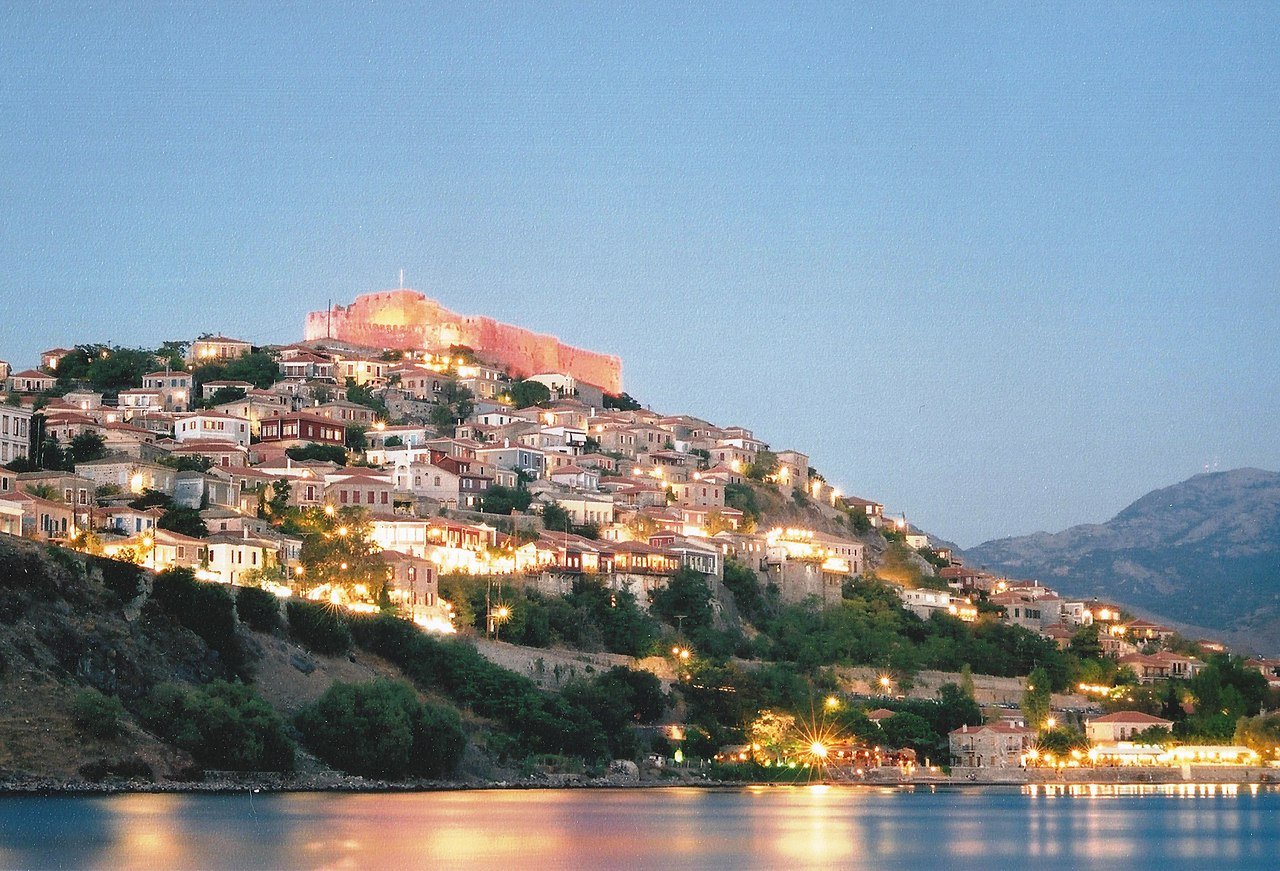
Big and beautiful Lesbos, or Lesvos, is the third largest Greek island after Crete and Evia, and the birthplace of the ancient Greek poet Sappho.
It boasts stunning natural landscapes, including beautiful beaches, lush green mountains, and picturesque villages.
It’s big and prosperous enough not to have to rely on tourists for its income. The island’s ouzo and olive oil are celebrated throughout Greece; many of the 100,000 islanders are employed in producing them, often using traditional, small-scale methods.
So it’s still possible for visitors to get a taste of old-fashioned island life by steering clear of the main tourist areas (which as tourist areas go, are still relatively undeveloped). Add historical sites, museums, Roman ruins, hot springs, great walking, and wildlife, and the island offers a one-stop introduction to Greek culture.

In ancient times, Lesbos was known as a place of culture. The most famous figures associated with Lesbos in antiquity were Sappho and Alcaeus, two poets who were born and lived on the island in the sixth century BC.
The island of Lesbos has faced significant challenges related to the migration crisis in recent years. Lesbos, being located in close proximity to the Turkish coast, became a primary entry point for migrants and refugees seeking to enter Europe. As migrant flows fizzle out the island has regained its charming aura.
Reasons to Visit Lesbos
Mytilene
The capital and largest city of Lesbos, Mytilene, has a long history dating back to ancient times. The city features several archaeological sites, including remnants of ancient walls, Roman baths, and the ruins of the ancient theater.

The Castle of Mytilene is one of the largest castles in the whole of the Mediterranean, covering more than 60 acres. It is a famous location for hosting local festivals, especially during summer.
Molyvos
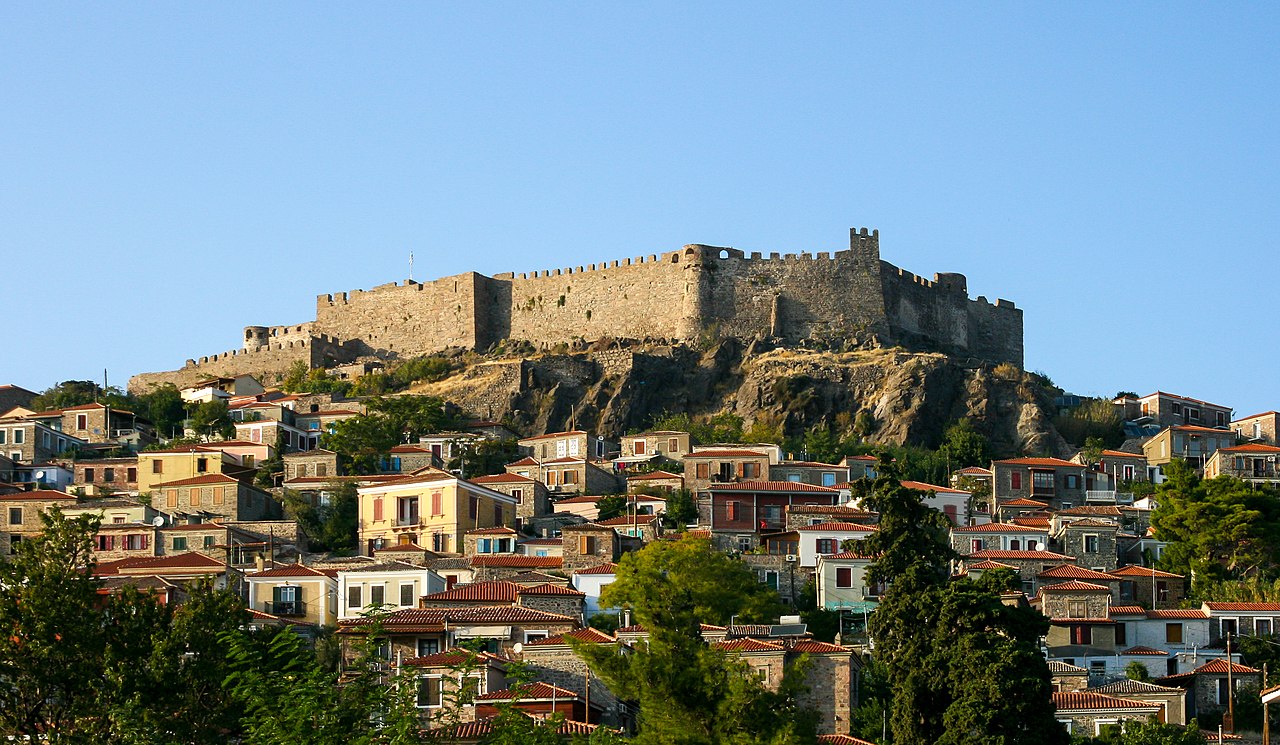
The impressive medieval fortress in Molyvos (also known as Mythimna), offers breathtaking panoramic views of the surrounding area.
The castle was built around 1373, during the Byzantine period, on the site of the acropolis of the ancient city, after the island of Lesvos was granted to Francesco I Gattilusio by John V Palaiologos. A few remains of the Byzantine structure are preserved in the northwest part.
The town of Molyvos itself is built of stone houses and shops which surround the castle and follow the coast to one of the most scenic harbors in Greece. Take a stroll along the charming harbor, lined with colorful fishing boats and waterfront tavernas offering fresh seafood.
Skala Eressos
Relax and enjoy the laid-back atmosphere of Skala Eressos, a charming coastal village with a beautiful sandy beach.

The town is famed for being the birthplace of Sappho, the legendary lyric poet also called the “Tenth Muse.” Skala Eresou was also the home to the ancient Greek philosopher Phanias, who was a pupil of Aristotle, and of Theophrastus, the father of classical botany. The ancient city walls from its time as an important trading centre are still visible.
Traditional Villages
Experience authentic Greek island life by visiting traditional villages like Agiassos and Plomari, known for their unique architecture, narrow streets, and local traditions.

Agiassos is known for its special bright green landscape, its narrow cobbled streets lined by rows of tiled-roof houses, the traditional architecture and its devout inhabitants. It is regarded as the artistic and religious center of the island.
The village is famous for its traditional pottery workshops. You can observe local artisans creating beautiful ceramics using traditional techniques.
Plomari is located due south of Mount Olympos. It offers scenic appeal as well as the presence of its famous ouzo-distilling industry. Brands can be sampled at the traditional coffee shops.
The local festival (or “panigiri”) season kicks off in mid-July with an ouzo festival, and culminates towards the end of the month.
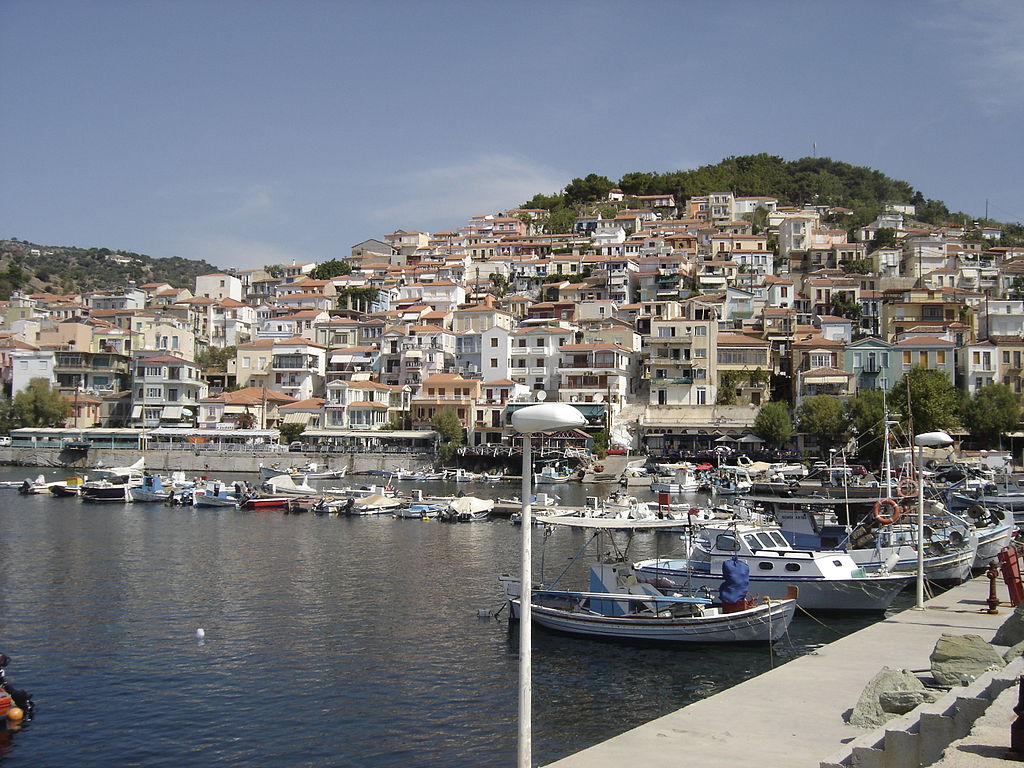
Petrified Forest
Lesbos is home to one of the world’s most significant petrified forests, a UNESCO Global Geopark, showcasing fossilized trees from millions of years ago.
The petrified forest was formed by successive volcanic eruptions which took place between 17 and 20 million years ago, covering a large part of the island in lava and ash. The earliest forests show the vegetation at the time of formation was subtropical, which differs from the present-day Mediterranean vegetation.
Two-million-year-old fossils were uncovered in December 2021 in a surprise find that shows very large mammals including horses, cattle, deer, and antelope once grazed the verdant slopes.
At the Lesvos Petrified Forest Museum which exhibits a variety of petrified tree trunks and fossils, you can learn about the fascinating geological history of the island.
Beautiful beaches
As Lesbos is a big island visitors have a great choice of scenic beaches. Some of the most popular ones include:
Eftalou Beach: Located near the village of Eftalou in the north of Lesbos, this pebble beach offers crystal-clear waters and natural hot springs that flow into the sea. It’s a peaceful spot with scenic surroundings.
Vatera Beach: Stretching for 7 kilometers along the southern coast, Vatera Beach is one of the longest on Lesbos. It features golden sand, shallow waters, and a relaxed atmosphere.
Petra Beach: Situated near the village of Petra, this sandy beach offers a stunning view of the nearby rock formation called Petra, with a church perched on top. The beach has clear waters and is well-equipped with facilities.
Tarti Beach: Found near the village of Tarti, this secluded beach offers tranquility and a pristine setting. It has pebbles and clear turquoise waters, perfect for a peaceful day by the sea.
Agios Isidoros Beach: Situated near Plomari, Agios Isidoros Beach is a sandy beach with calm waters. It is well-organized with sun loungers, umbrellas, and beachfront tavernas.
Agios Stefanos Beach: Located near the village of Agios Stefanos, this picturesque beach has a combination of pebbles and sand. It offers a tranquil environment and is known for its crystal-clear waters.
Tsamakia Beach: Situated close to the town of Mytilene, Tsamakia Beach is a popular spot for locals and visitors alike. It offers a sandy shore, shallow waters, and various amenities.
Culinary delights of Lesbos
Olive Oil
Lesbos is renowned for its high-quality olive oil production. There are about 12 million olive trees on the island, covering 40 percent of the area. That’s around 122 trees per inhabitant, that’s by far the largest number of olive trees per capita in the world!
There are three varieties of olive trees on the island and this, combined with the climate and the soil quality, produces supreme quality and distinctive flavor.
Lesvos premium olive oil particularly has a light texture and low acidity, a golden color (from the low chlorophyll content) and a rich aroma.
You can visit local olive groves and learn about the olive oil-making process.
Ouzo
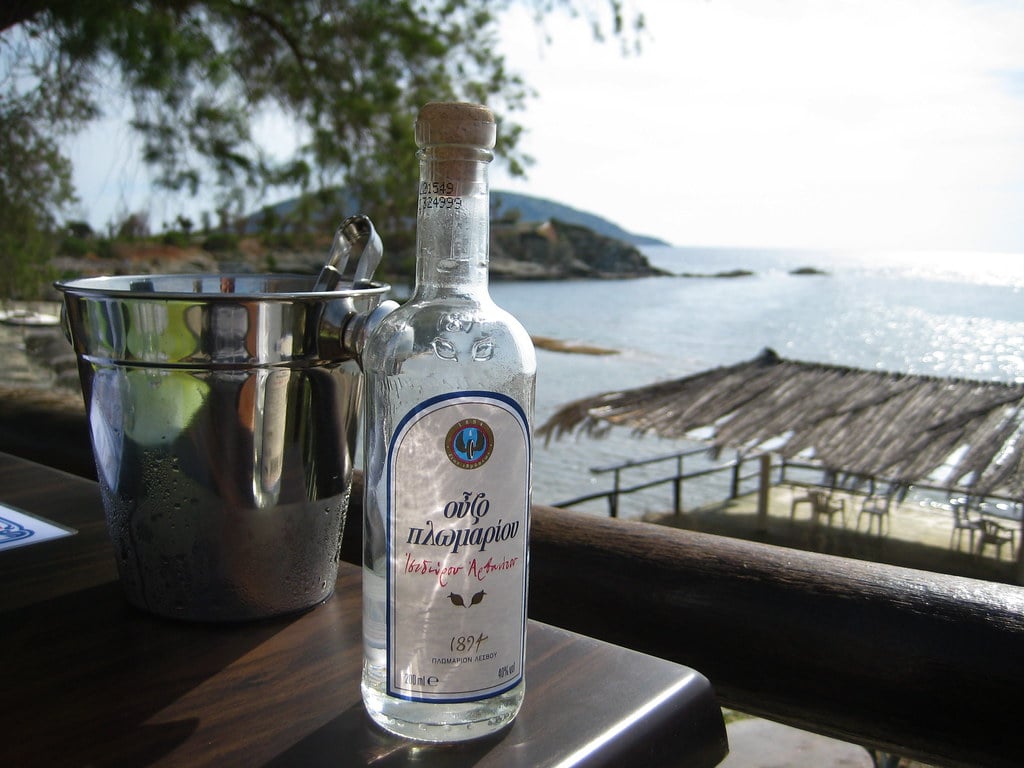
Lesbos is famous for its production of ouzo, the anise-flavored drink deeply connected with the nation of Greece. It is simply the spirit of Greek summer which no one can copy.
It’s probably the most social drink ever distilled. Those who share this particular flavor, come closer and speak more easily. Ouzo is the drink of companionship and confession.
Lesbos has a long-standing tradition of producing high-quality ouzo. The island’s unique microclimate, fertile soil, and abundant supply of anise plants contribute to the distinct flavor of ouzo.
Visitors to the island can explore local distilleries, learn about the ouzo-making process, and of course, savor the rich flavors of this iconic Greek drink.
Traditional Cuisine
Lesbos is distinguished by its culinary tradition based on local – land or sea – produce. The visitor can indulge on a variety of cheese products, such as ladotyri, feta Mytilini and Kaseri Eressou.
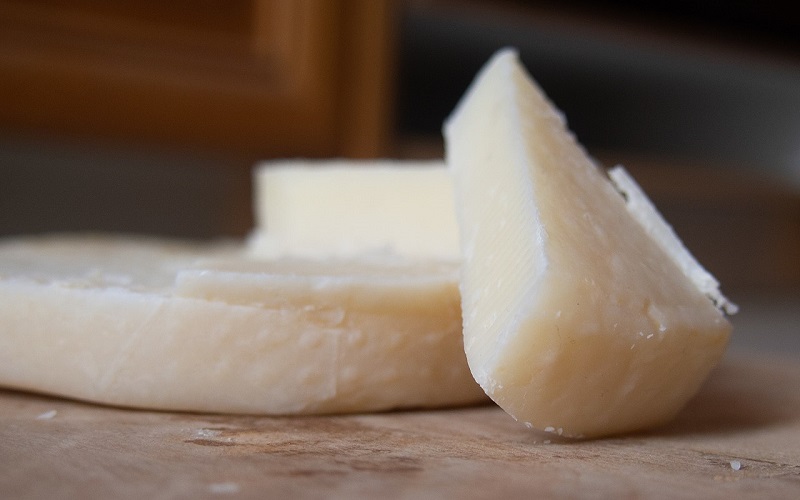
Other delicacies include cured sardines and anchovies caught in Kalloni Bay; spoon sweets, marmalades and liquors, all made with local fruits; thyme, pine and flower honey; wine from local varieties; and fresh fish and shellfish, which are utterly tempting especially when served with a tantalizing ouzo drink.
In the numerous tavernas and “ouzeris” around the island one can get the chance to taste all the local goodies.
Archaeological sites
Lesbos, known for its rich history and cultural heritage, features several notable archaeological sites. Here are some of the main archaeological sites:
Ancient Pyrrha: Located near the modern village of Sigri on the western coast of the island, Ancient Pyrrha is an archaeological site with well-preserved ruins. It was an important city in antiquity, and visitors can explore the remains of ancient buildings, including the city walls, houses, and a theater.
Ancient Messa: Located near the village of Thermi on the eastern coast, Ancient Messa was an ancient city with archaeological remains that date back to the 7th century BC. Visitors can see remnants of city walls, tombs, and other structures.
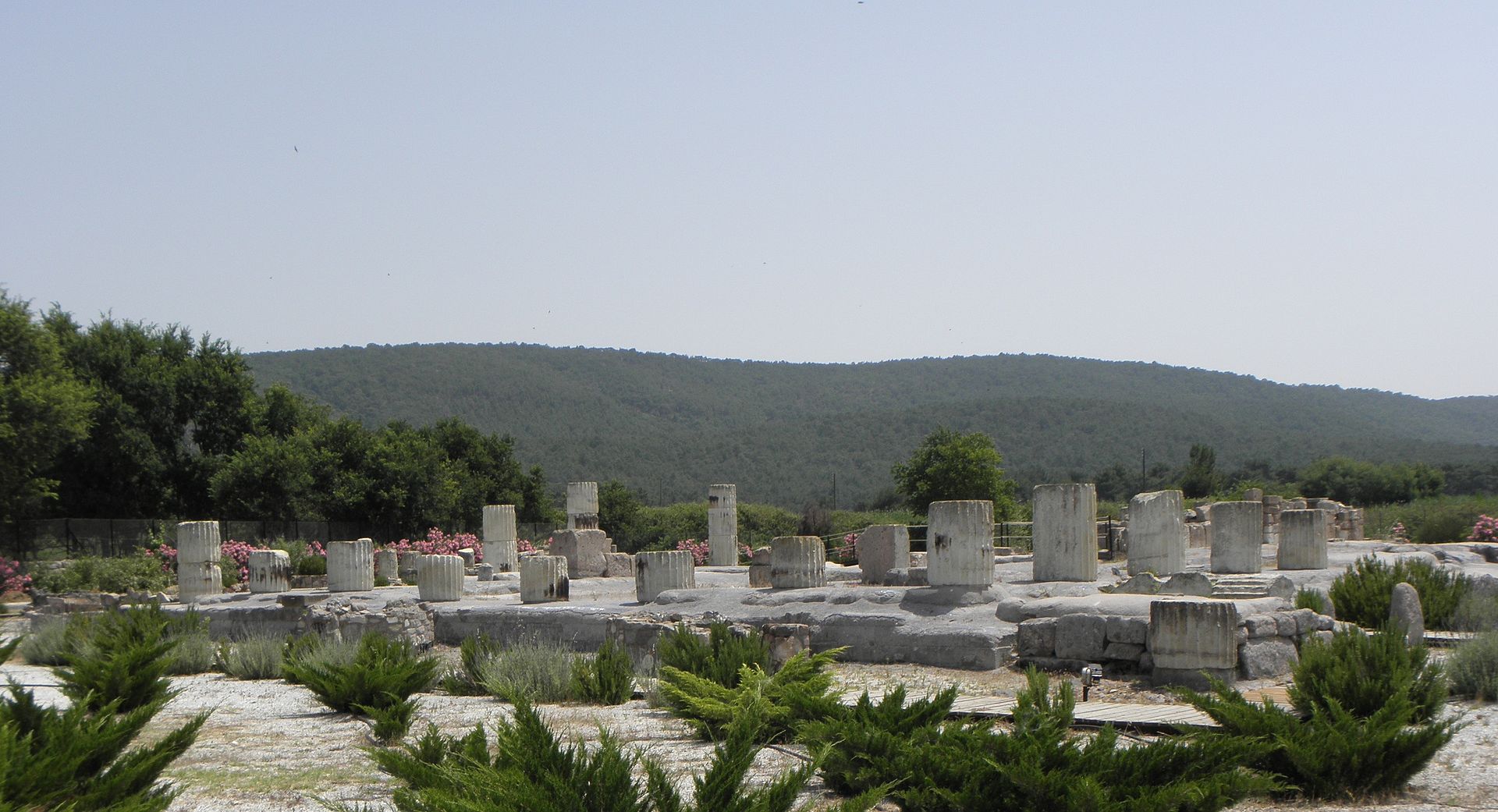
Hephaestia: Situated on the northeastern coast of Lesbos, Hephaestia was an ancient city dedicated to the god Hephaestus. The site offers ruins of ancient buildings, including a theater, a temple, and a marketplace.
Ancient Antissa: Located near the modern town of Antissa in the northwest of the island, Ancient Antissa was an ancient city known for its connection to the poet Alcaeus. Visitors can explore the remains of a theater, an acropolis, and various structures.
Klopedi: Klopedi is an archaeological site located near the village of Parakoila in central Lesbos. It was an ancient city known for its fortifications and sanctuaries. The site contains remnants of ancient walls and foundations of buildings.
See all the latest news from Greece and the world at Greekreporter.com. Contact our newsroom to report an update or send your story, photos and videos. Follow GR on Google News and subscribe here to our daily email!



